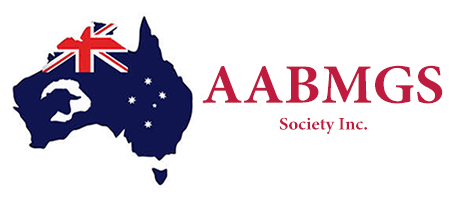Photo – Persian Sheep – Janelle Cooper
Persian sheep are an ancient breed of sheep that originated in Africa. This beautiful breed of sheep has many unique and defining characteristics. Their coat patterns are spectacular, they have a very short tail, a large dewlap under their throats and prominent chest and they store excess fat on their rumps.
Persian sheep were imported via embryos into Australia. In 1999 the coloured-head variety was first imported then in 2006 the skilder or speckled pattern was imported.
Persian sheep are a small compact breed. Their short attractive hair coat does not require shearing but is shed each year. They can lamb every 8 months and they are exceptional mothers. They are a naturally placid breed and respond extremely well to regular handling and become very tame.
Persian sheep come in two basic varieties:
- Kleur kop (“coloured head” in Afrikaans) – in this variety the entire sheep is white except for the head which can be either black, brown, red, tri-colour or blue.
- Skilder (Speckled)(“painted sheep” in Afrikaans) – these sheep have solid-coloured heads, legs and tails, while the body is covered with spots and patches on a white background. This term describes these beautiful animals well. The pattern on each individual sheep is unique. These sheep are extremely attractive and can also be either black, brown, red, tri-colour or blue.
Persian sheep are wonderful for hobby farmers. They are small, calm and naturally polled. They do not require shearing and have short tails so no docking required. They do not climb up fences or trees so are perfect for grazing in orchards and vineyards. They enjoy woody weeds as well as pasture and are perfect cross grazing companions for horses.
Breed Standard
A. Conformation
Head and Neck
Strong head and neck symmetrically formed with a masculine wide, curved and prominent nose in the ram. Width between the eyes which are well protected above, ears in proportion to head, large and pointed. Strong wide mouth and well-formed teeth. Loose horn buds acceptable, but no horns fixed to skull. Dewlap prominent and well-rounded with the neck, strong and full, but not too long and properly attached to dewlap. Head slightly higher than the line of the back and should have a tranquil and stately demeanour.
Forequarter
Deep and wide with straight legs, spaced far apart. Chest wide, deep and rounded. Shoulders well-attached and well-muscled.
Body Proper
Body: good depth, with well-sprung and muscled ribs, back straight from shoulders to hip bones.
Rump: Well-fleshed, wide with a strong connection to the back.
Groin: Held low and well-filled.
Hindquarter
Loin fairly long, wide hips, meaty with a square shape. Well-fleshed outer and inner thighs with shanks in proportion to bone–meat ratio of hindquarters.
Tail Section
Substantial tail, well attached, balanced and in proportion to body. Symmetrically formed. Base on first connection (between tail section and body), sturdy and squarely attached and in proportion to the body size. Second connection (between first connection and apex) to be firmly attached to base or first connection and to be level with rump. Apex to be held high, well attached and symmetrical. Tassel or small tail to preferably hang straight down, be in proportion to the rest of the tail section and be lighter in ewes than in rams. A skew tassel or small tail is now also acceptable for stud purposes. The mirror (shining skin triangle without hair) to be black without any white spots, wide and have an inverted V-shape which is level on the bottom section.
Legs
Strong well placed legs on sturdy feet, strong pasterns, hocks not sickle or cow hocked. Hooves short and black in colour without being turned in or turned out.
B. Size
An animal with a good and acceptable size for its age. Height Standards will be introduced as the breed develops.
C. Hair Covering
Smooth and lustrous in quality without evidence of wool.
D. Reproductive Organs: Rams
Two matching, well-developed and formed testicles in a single sheath, which is not split at end. Testicle sac to be firmly attached to body.
F. Reproductive Organs: Ewes
A well formed and attached udder with ONE fully functional teat PER side. Texture of udder to be soft and pliable.
Registration requirements
Include current photos of the sheep with applications for registration of Persian Sheep. Applications will be forwarded to the Persian Sheep Society of Australia for approval before being eligible for registration with the AABMGS.





